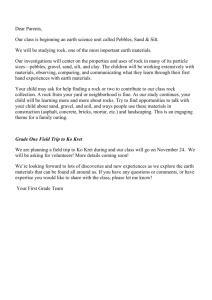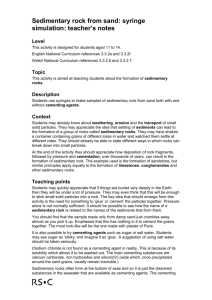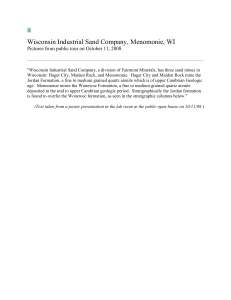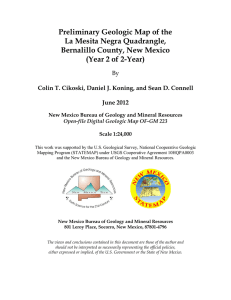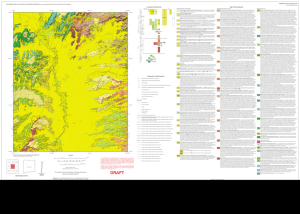Sedimentary rock from sand: syringe simulation
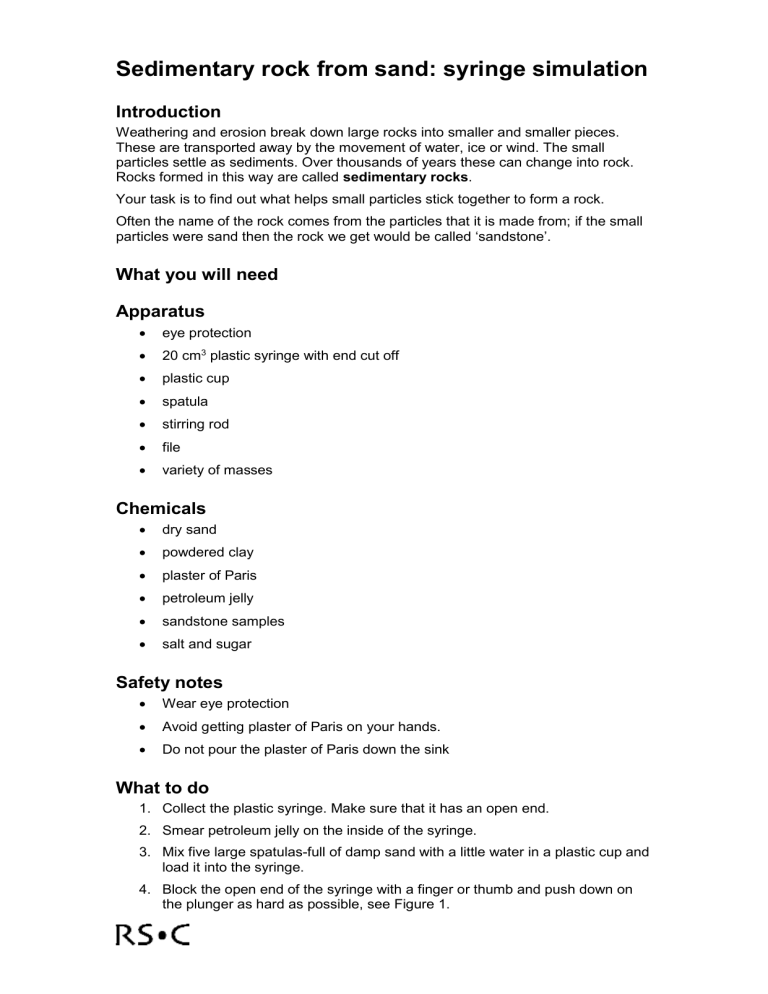
Sedimentary rock from sand: syringe simulation
Introduction
Weathering and erosion break down large rocks into smaller and smaller pieces.
These are transported away by the movement of water, ice or wind. The small particles settle as sediments. Over thousands of years these can change into rock.
Rocks formed in this way are called sedimentary rocks .
Your task is to find out what helps small particles stick together to form a rock.
Often the name of the rock comes from the particles that it is made from; if the small particles were sand then the rock we get would be called ‘sandstone’.
What you will need
Apparatus
eye protection
20 cm 3 plastic syringe with end cut off
plastic cup
spatula
stirring rod
file
variety of masses
Chemicals
dry sand
powdered clay
plaster of Paris
petroleum jelly
sandstone samples
salt and sugar
Safety notes
Wear eye protection
Avoid getting plaster of Paris on your hands.
Do not pour the plaster of Paris down the sink
What to do
1. Collect the plastic syringe. Make sure that it has an open end.
2. Smear petroleum jelly on the inside of the syringe.
3. Mix five large spatulas-full of damp sand with a little water in a plastic cup and load it into the syringe.
4. Block the open end of the syringe with a finger or thumb and push down on the plunger as hard as possible, see Figure 1.
5. Stop pressing, remove your finger, carefully push out the sand pellet and leave it on a piece of paper to dry. Label it ‘sand and water only’.
6. Mix four large spatulas-full of damp sand with one spatula-full of clay and repeat steps 3, 4 and 5. Label the pellet ‘sand, water and clay’.
7. Mix four large spatulas-full of damp sand with one spatula-full of plaster of
Paris and repeat steps 3, 4 and 5. Label the pellet ‘sand, water and plaster of
Paris’.
8. If you are trying other mixtures, follow the same steps and label them appropriately.
9. Leave the ‘rocks’ to dry overnight.
Figure 1 Squeezing the sand
Testing your rock samples
What could you do to find out which of your sam ples is the most ‘rock-like’?
Are they all dry? Why would it be unfair if one were not fully dry?
How will you measure the strength of each one?
Discuss your plan with your teacher and then make a suitable table to record your results.
Compare your results with tests on a real piece of sandstone.
What you found out
Has your experiment answered the following question?
Is pressure on its own enough to form a sedimentary rock from sand?
Questions
Q 1. What sedimentary rock forms when mud is compressed?
Q 2. Mud deposits consist of up to 80% water, far more water than sand grains hold. Explain why mud will become compacted much more than sand.
Q 3. You are comparing two types of sandstone. One is sandstone A and the other sandstone B .
Sandstone A is cemented together with calcium carbonate. Calcium carbonate reacts quickly with acid.
Sandstone B has no calcium carbonate in its cement.
Which sandstone is best for use as building stone in a big city? The city is exposed to some acid rain.
Explain your choice.


